Understanding the UTM best practices is key to making your data nuanced and consistent. You’ll even make it easier for yourself to organize and report on your tracked links.
Check out the following best practices for UTM parameters that we’ve compiled during years of setting up our tool for fast-growing, data-driven companies..
What Are UTM Parameters for Google Analytics (and All Other Analytics Tech)
UTM parameters (UTM codes) are text strings added to URLs to track clicks to a particular link.
Here’s an example of a website link: web.utm.io
Here’s the same link with UTM parameters attached to it:
web.utm.io/?utm_source=twitter&utm_medium=social-cpc&utm_campaign=content-distribution-02-2022&utm_term=utm-best-practices-for-amazing-campaign-tracking&utm_content=video-tweet
What the non-marketers can see is a string of characters that don’t make sense.
But as an advanced marketer, you see something else–the five basic UTM parameters:
- utm_campaign – Tracks the name of your marketing push across channels and platforms. Ex: product-launch-us, anniversary-sale, content-distribution, etc.
- utm_medium – Tracks which channel type the visitor used to land on your site. Ex: paid social, organic social, email, etc.
- utm_source – Tracks the domain name or platform that’s sending the traffic. Ex: facebook, twitter, activecampaign, mailchimp, taboola, etc.
- utm_content – Tracks which part of the text or which call-to-action placement sent the traffic. Ex: learn-more-copy, download-now-button, etc.
- utm_term – Tracks which paid search keywords sent the traffic. It can also differentiate social ad headlines, email subject lines, etc.
On top of the five main ones, you can also use custom parameters and expand the campaign dimensions you report on.
Why Are UTMs Critical to Tracking Your Campaign ROI?
Without UTM parameters, you would lack attribution data for clicks from a long list or traffic sources, and you would lack campaign nuances for almost all of your traffic sources.
When you get a click from another website, the referring website’s URL is passed on to your analytics tool and recorded as the click’s source. In the reports, it is called “referrer” and you’ll find it displayed as the source of the session.
There are many scenarios, though, in which the referring URL can’t be passed. Those include, but aren’t limited to:
- Clicks from PDFs or offline spreadsheets
- Clicks from emails, e.g. when opened in desktop apps
- Scanned QR codes
And even when you do have the ability to pass the referring URL as the sessions’s source, you often miss the nuance you need to report on your performance and make decisions that will improve the ROI. Without UTMs, you often do not have the ability to see key nuances such as:
- Which one of your concurrent campaigns was behind the most valubale clicks?
- Which specific post or ad version within your campaign initiated the sessions with high value of leads generated?
- Which email list had a higher click rate?
- Which button or CTA was overlooked?
- Which subject line lead to high website engagement?
Granular nuance like that is indeed available inside the individual ad platforms. Facebook Ads give you so much information that sometimes you have a hard time deciding what report to open first. Email platforms also give you a fair share of detail if you only want to report on what happens in the email itself, without being interested in tying it to website behavior. Google Ads are even better and integrate with Google Analytics out of the box, connecting ad and website interaction.
But UTM parameters take your data collection one step further. They allow you to standardize campaign reporting and ROI attribution across platforms.
UTMs allow you to standardize and add nuance to campaign reporting and ROI attribution across channels.
How to Build UTMs: Best Practices and Common Mistakes
Now that we’ve set the foundation for what UTMs do and how they work, here’s the ultimate list we’ve put together. It formed during our own work on setting up UTM tagging strategies for enterprise websites. Check in regularly to see updates on UTM’s latest best practices.
PART 1: BEST WAYS TO USE THE STANDARD AND CUSTOM PARAMETERS
1. Use ‘utm_campaign’ for Campaign Names that You Can Use across Platforms
The campaign parameter helps you find out why visitors are coming to your website. It gives you the opportunity to reference a contest, sale, partnership, or product. Make it specific, concise, and readable.
An example: A multinational eCommerce business participates in a major 3-month sale in Spain that occurs at the start of each year. The marketer can use this campaign parameter:
utm_campaign=es_winter_sale_2022
It specifies the following for easy reference: Country (es or Spain); year (2022);and the actual campaign (winter sale). At the same time, this campaign parameter is adaptable across multiple platforms.
Concurrent campaigns are kept separate from each other. And within a campaign, you can see which links (social, email, or display ads) are performing well.
Aside from product promotions, you can name the campaign parameter according to your marketing strategy. For instance, you’re running a campaign to get more people to join your subscription-based community. This campaign parameter works on any platform:
utm_campaign=leadgen-newmembers
Getting specific is key because generic labels prevent you from organizing your data. Using ‘anniversary-sale’ works well in the first year of your business. But as you celebrate more business anniversaries, campaign information piles up, creating confusion along the way.
2. Use ‘utm_source’ for Source Website or Platform Name
The source UTM tag refers to the platform or website that drives the traffic to your site. It can be a search engine, social network, email platform, or advertisement platform. When placing the source, use lowercase when typing the brand name or website minus the ‘.com’.
Examples are ‘utm_source=facebook’ and ‘utm_source=mailchimp.’ Plain and simple.
Consistency and conventions are important. If someone uses ‘fb’ or ‘ig’ for a summer campaign while the rest of the team uses ‘facebook’ or ‘instagram’, it will splinter your data and make it hard to analyze.
3. Use ‘utm_medium’ for Channel Type
Source is like the origin country on your travel ticket and medium would be the type of the vessel you’re traveling with.
The medium UTM code refers to the type of channel used to drive traffic to your website. It covers display, native, CPC, or email marketing. For social media platforms, using the word “social” is sufficient.
For instance, Facebook CPC will be ‘utm_medium=social-cpc’. Here are other options:
utm_medium=email
utm_medium=paid-pr
utm_medium=display
Most people confuse the medium parameter with the source UTM tag when filling out the medium field. Setting up emails is a common example of that. “email” is always the medium, but source tag can be filled with the newsletter list name or the software you send it from.
4. Use ‘utm_content’ for Link Placements
The content parameter truly is one of the best ways to add nuance to your reporting.
The content URL parameter identifies the link types and placements that drive clicks. It’s especially handy when there are two types of CTAs or ads in one ad or email that link to the same URL.
Consider Facebook, for example. Hovering over your feed will reveal ads. There are also ads on the sidebar if you access the website version. To create distinction between the two, you can style each content parameter differently:
utm_content=main-feed
utm_content=sidebar
Other placement ideas are:
utm_content=headline
utm_content=first-blog-banner-v1
utm_content=caption
Many marketers make the mistake of not including this parameter in the code since it’s optional. Instead, they create multiple campaigns with different names, making it more difficult to get more granularity for a single campaign.
5. Use ‘utm_term’ for Copy Versions
The term parameter comes from Google Ads where it would be used to track the search keywords a potential customer has used to get to your website. You can use this UTM parameter to gauge which phrases convinced the reader to take action. It serves as a testing tool to find out which copy resonates with your audience.
For example, you’re running a paid campaign with the target keywords “black boots for sale” and “women’s black boots.” You can use UTM parameters to track which of these keywords drove the most traffic and contributed to your revenue.
utm_term=black_boots_for_sale
utm_term=womens_black_boots
It also works great for emails. You can conduct A/B testing to see which CTA or subject line resonates well with your subscribers. Consider two different subject lines for a Mother’s Day giveaway email campaign: The first is “Win a free trip for your mother” and the second is “Send your mother on a trip she deserves.” Here, you can get specific and use values like:
utm_term=win-a-free-trip-for-your-mother
utm_term=send-your-mother-on-a-trip-she-deserves
Lastly, the content tag helps differentiate your ad creatives, such as the ad headlines. Just like with the email subject lines, just go ahead and put the different headline versions into the term parameter.
6. Use Custom Parameters if You Regularly Report on Special Attributes
The five basic parameters cover the bases, but custom UTM parameters help you refine your UTM tracking efforts to get more accurate, targeted results while maintaining data integrity.
The best time to use them is when your campaigns frequently and repeatedly carry characteristics that would be useful to distinguish in your reporting, and that don’t easily fit into the five standard parameters.
Imagine how useful it may be to differentiate links between the two agencies that you’re doing a trial run with. Or between long-term collaborators. Or between your two most popular geotargets, two sub-brands, etc.
All these are possible by adding custom parameters to UTM codes, such as:
&geo=chicago
&nfluencer=bella-poarch
&affiliate=alissa-jung
&agency=mcgaw
&brand=fresh
These custom UTM parameters allow marketers to differentiate campaigns without overloading the basic parameters. Apart from clean and accurate data, they make ROI data filtering and sorting easier in your analytics tool. To learn more, explore our comprehensive blog post on custom parameters.
Make Building UTMs Fast & Easy
PART 2: SYSTEMS FOR COHESIVE NAMING AND ACTIONABLE REPORTING
With a thorough UTM tagging strategy, you’ll be able to name the campaigns consistently. This makes it easier for your team to create unified reporting where you can see all of your campaign data or ad data in one place. You’ll finally get a full picture of your marketing mix, which levels up your attribution and enables great budget allocation decisions.
7. Establish a Naming Convention
The UTM naming conventions are the naming rules you establish as the only one approach to creating UTMs.
For example, you offer tailored quotes for your services in your paid ads, organic social, newsletters, and sponsored posts. For this campaign, the convention should be:
- Campaign: ‘request-quote’ for all channels
- Medium: Always use ‘social-cpc’ for paid ads, ‘paid-pr’ for sponsored posts.
- Source: Use the full name of the platform. Examples are “mailchimp” and “twitter”
With clear instructions, everyone on your team can use them correctly, which strengthens your UTM reports.
You can make a master spreadsheet for UTM parameters, but it can be overwhelming for newbies in advanced marketing teams. If someone on your team switches up some UTM parameters in the middle of a campaign, you might see two sets of data: one linked to the old campaign and another one associated with one or multiple campaigns. Worse yet, you may not even know about it.
A dedicated tool such as UTM.io lets you define rules and set permissions to maintain tagging consistency, so your naming conventions are built into your team’s workflow by default. And check out our advanced guide with examples if you want to gain a deeper understanding of naming conventions in campaign parameters.
8. Make UTMs as Close to GA’s Default Channel Grouping As Possible
One of the most basic UTM best practices is: Don’t try to reinvent the wheel, follow GA’s default channels. Most of them can be reflected in the medium parameter:
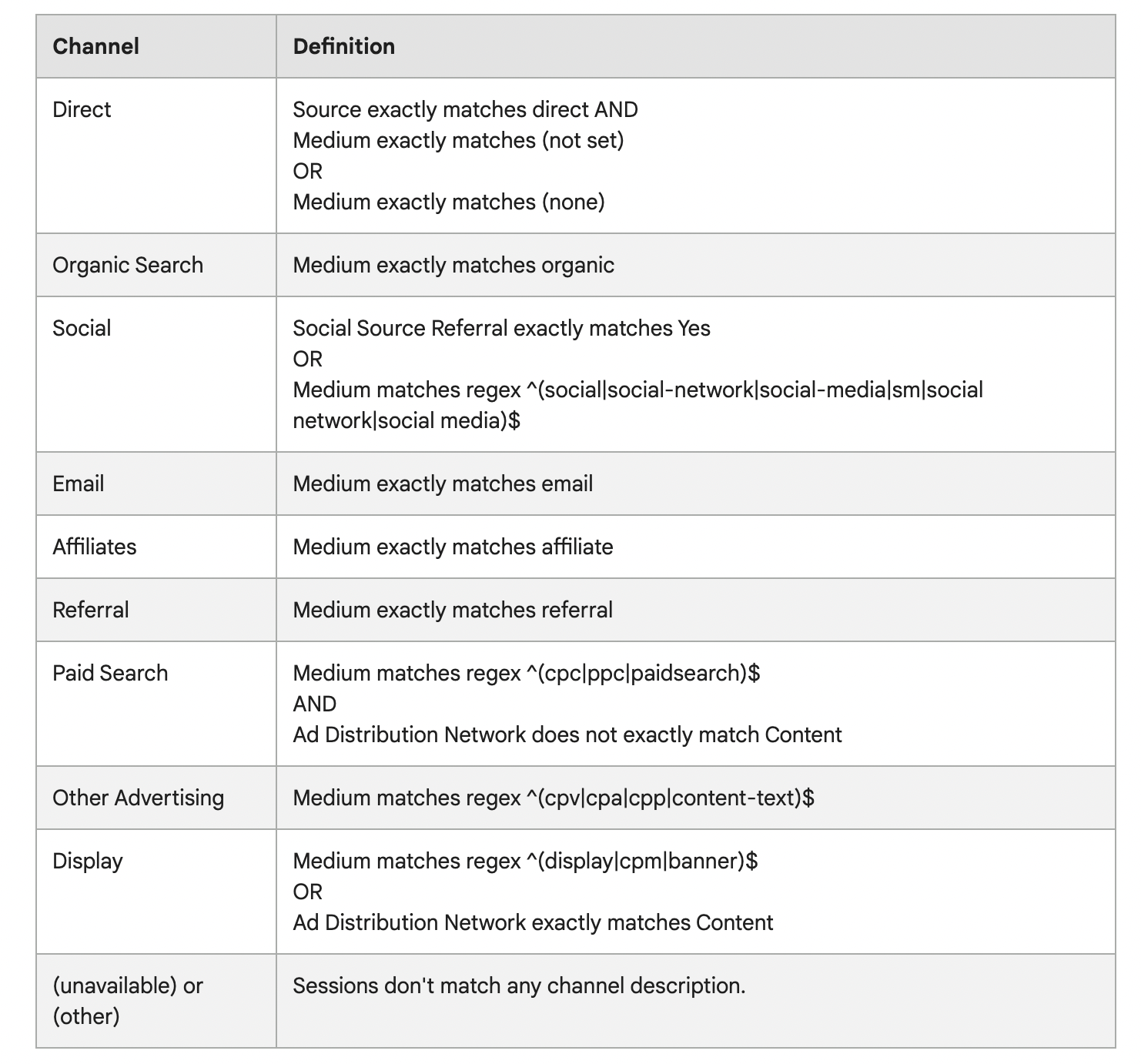
By using UTMs that match your GA-defined channel groups, you can easily compare campaign data from the platforms you control with data from organic channels you don’t control. Organic Google, email correspondence, and free websites linking to you are some channels beyond your control.
9. Record Who Built the Link and When
UTM data should be documented from the very beginning: this means recording the name of the UTM manager who built the link. When someone on your team has questions, you can refer them to the person with the answers.
Both our UTM spreadsheet and UTM builder tool allow you to record the name of the UTM link creator. But since sheets won’t easily flag you for omitting information, it’s likely to be overlooked.
When you use the dedicated UTM builder such as UTM.io, for instance, it auto-populates the “created by” field based on the user account.
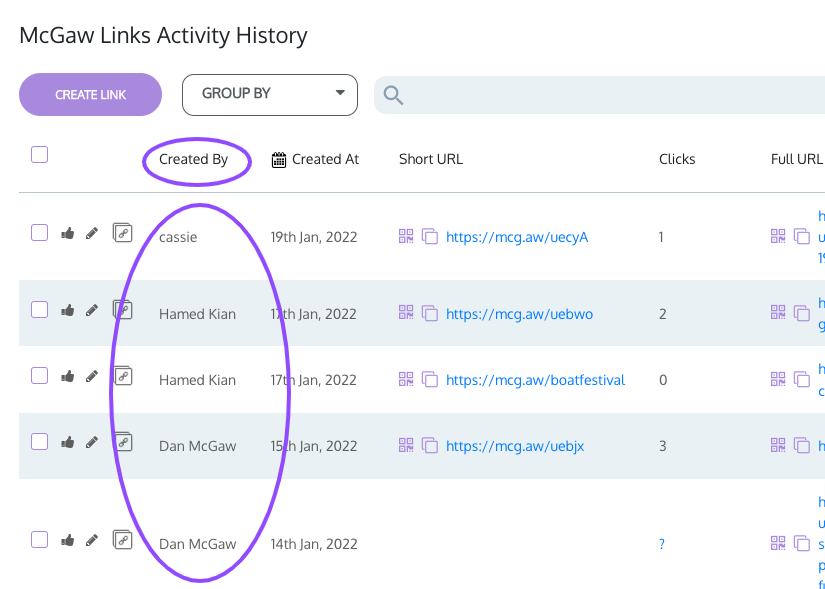
10. Use a UTM Tool That Makes Your Link Building Workflow Consistent and Fast
Manually creating UTMs takes a huge chunk of your time, especially when you’re running several campaigns and have to create multiple tags.
Most people start out using a spreadsheet, but it gets messy over time. And as you know, messy UTM spreadsheets can cause you a few headaches.
Simplifying and organizing your campaign tracking workflow is essential if you want to save time without sacrificing data accuracy. The best way to improve your campaign tracking is to use a dedicated UTM builder.
UTM.io’s tagging tool allows you to create and save UTM templates to maintain consistency within the team. Even with different team members creating tags, your links will remain consistent with the convention. Customization also comes easy.
Take the guesswork and pressure out of creating UTM links
PART 3: WHEN (NOT) TO USE UTMS
UTM tagging best practices include knowing when to use UTM parameters and avoiding instances where they could be ineffective. We’ve laid out the appropriate and inappropriate uses of UTM tagging below.
11. Do Always Tag Your Email and Social Campaigns
Email and social are the channels that get miscategorized most often, usually as Other or Referral. So always tag these two channels. But go beyond just having some random tags on them.
Use your own UTM tags instead of your email platform’s automatic tagging. The key reason is that auto-generated UTMs will never be exactly in line with your taxonomy, and they’re not always compliant with best practices for UTM parameters.
Same goes for auto-tagging that some social platforms and ad platforms will do for you. We recommend using your own UTM naming.
12. Do Not Use UTMs on Natural Referrers
UTMs aren’t designed for organic search, email sent by users, links organically shared in messaging apps, or social posts by the public. These channels don’t give you enough control. Some people try to tag at least some of the organic traffic, but the data is always incomplete and unverifiable.
13. Do Use UTMs on Referrers You Control
Referrers pertain to local directories where you place the website link yourself.
Listings, such as Google My Business or Yelp, are an important source of leads for the business, and the links the listings use are controlled by the business. That makes it lucrative to differentiate the local directories from other referrers.
The image below shows the report of a company active in local SEO. They tag all the links they place on local directories. You can see how local directories have some of the best traffic. This is easy to see if you put UTMs on the links that you place on the listings.
You could think of other examples of reporting value that comes from putting UTM tags on referrers you do control. Such as affiliates, or non-local directories. Do use UTMs whenever you can ensure consistency within the channel or platform you use them for.
14. Don’t Use UTMs on Internal Links
UTMS on internal links typically start a new visitor session which skews your session and bounce rate data in campaign reports. You also end up with wrong conversion data because you lose the user’s point of origin.
15. Do Use UTMs on Google Ads When Hybrid Tagging with both UTM and GCLID Tags
Google Ads integrate well with GA out of the box. The performance data in your Adwords account is automatically available in your Analytics account.
But GA also allows you to use both UTMs and GCLIDs to mix manual and auto-tagging. For data accuracy, however, you must override the automatic tagging with manual tagging.
It’s out of scope for this article, but you can find more information on our sister blog’s advanced guide to Google Ads parameters.
16. Do Use a UTM Cleaner Script on Your Website
A UTM cleaner script removes UTM parameters once the web page is loaded. Your analytics tool can still register the UTM codes. But because the UTM will only show in the browser’s address bar for a few seconds, users can copy and paste UTMs into messages and organic emails without tagging.
Think about someone who comes from paid social, likes what they see enough to want to share with a friend, then copies the link to share on Whatsapp, and sends it. The UTM stays in there for the recepient of the message, too. The recipient clicks on it and gets tracked as paid social visit even though they never saw your link on a social network. The paid social campaign gets overreported.
Clean links also have plenty of other benefits, including: higher click-through and sharing rates, better campaign tracking and user experience, as well as fewer incorrect attributions. Discover more in our post about removing UTMs while maintaining accurate attribution.
PART 4: FORMATTING
A set that contains an inconsistent UTM parameter can alter your data, affecting your ability to measure marketing performance accurately.
17. Use Dashes Instead of Spaces
Spaces auto-convert to %20, which can cause inconsistencies and complicated campaign results. Underscores and plus signs are also common replacements for spaces.
Underscores are better used when you want to keep two words together and make them read like one. For example: utm_campaign=best_practice-distribution will mean that you’re doing distribution for the best practice content.
Plus signs belong in the past, so don’t over-complicate your life by using them.
18. Enforce Lowercase
UTM parameters are case-sensitive. If you use different cases, you’ll need a sharp memory to remember which ones are capitalized.
As an example of a confusing UTM Link, let’s turn to Fashion Marketplace Faire’s Facebook ad:
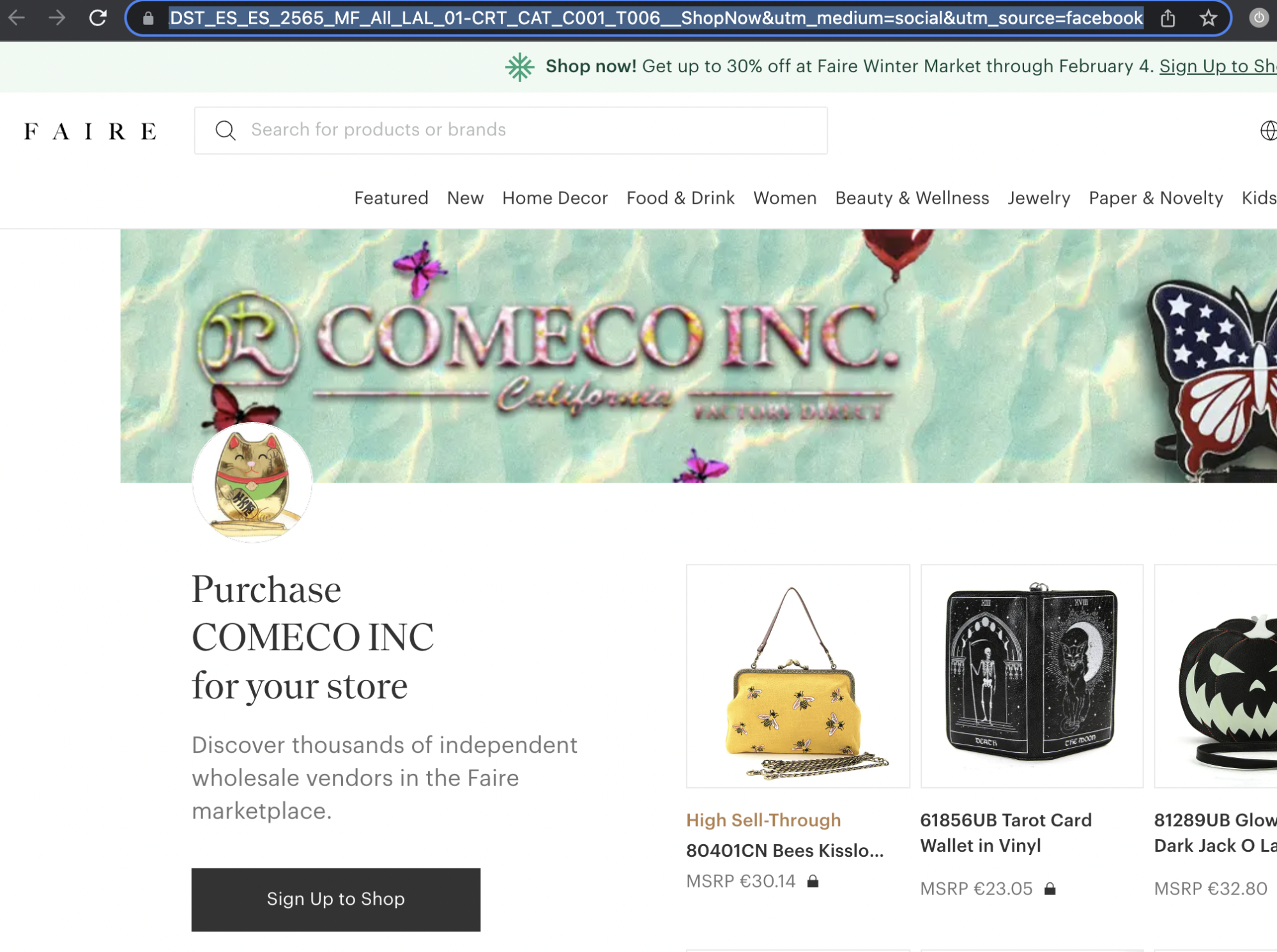
https://www.faire.com/brand/b_4r3j4e8q?fbclid=IwAR1Niw45-MI-GVgPgK3tPyC4nnCo9oUf1A6ljEdBAPKnai0HaMMxAtiA7nw&placement=
fb_Facebook_Right_Column&refP=p_7c5sjwwhbi&utm_campaign=
FRE_RTL_PRO_EMEA_ES_CAT_Orders_Volume&utm_content=ADST_ES_
ES_2565_MF_All_LAL_01CRT_CAT_C001_T006__ShopNow&utm_medium=
social&utm_source=facebook
There are a few different issues with the tags in this link, but for the sake of this section, we’ll just point out that the uppercase letters on the link make it look even more clunky and overwhelming. Worse yet, if the next person doesn’t use the combined lettercase exactly the same way, the data will splinter. So, the best practice for UTM parameters is to use lowercase letters to avoid tracking difficulties. Create links that look neat and tidy.
19. Avoid Redundancy
There shouldn’t be similar UTM parameters. When the source already mentions ‘facebook’, don’t repeat it in medium or campaign. You’ll be better off using the space in the next parameter for information you haven’t mentioned elsewhere yet.
20. Keep It Simple, Emphasize Readability
Short, simple naming conventions perform best. A good way to tell if your UTM is clear and readable is to check that you can come up with a one-line summary from it. Let’s go back to our Mother’s Day example:
abc.com/?utm_source=facebook&utm_medium=social&utm_campaign= giveaway-mothers-day-2022&utm_content=win-a-free-trip-for-your-mother
When read out loud, it goes like this: A Facebook user clicked on our giveaway campaign for mother’s day this year using the “win a free trip for your mother” CTA button.
21. Shorten the Links
Clean, short links look better. People tend to avoid long, clunky links for fear of malware. But compromising your UTM parameters isn’t an option either. A workaround comes in the form of link shorteners. UTM.io’s custom branded domains provide you with a clear, recognizable link without stripping the value of your UTM tags. If you want to keep it simple, you can also use our own link shortener, and if you already track your link performance in Bitly, our tool integrates with Bitly’s shortener as well.
Your users will appreciate the small but noticeable improvement in the experience you provide to them.
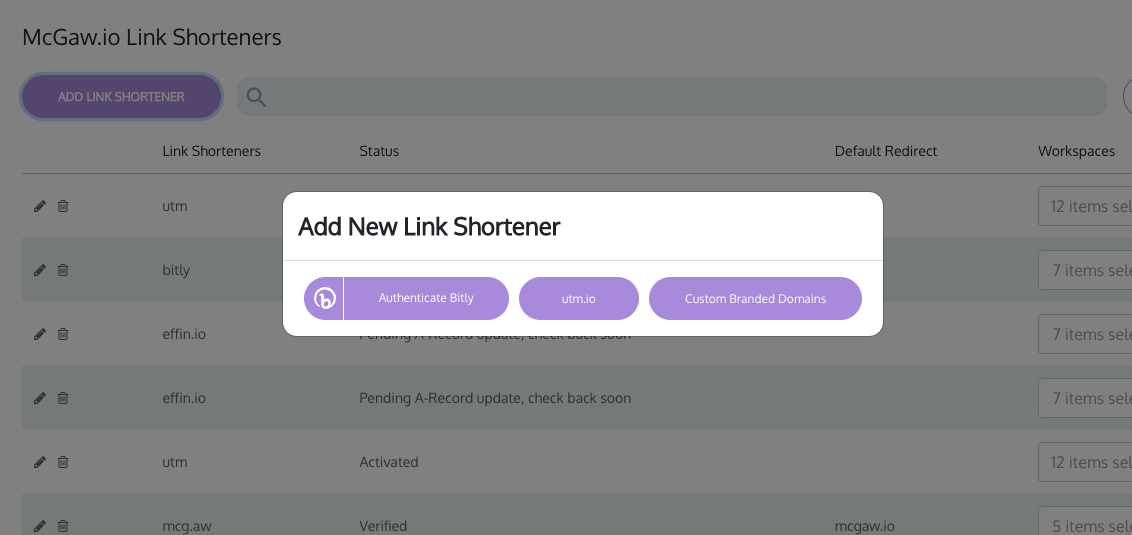
PART 5: PUT THE NUANCED CAMPAIGN DATA TO USE
Our UTM’s final best practice is to put what you’ve learned to work. Here’s one example of how to track the nuances of where your clicks and ROI came from. Think about differentiating overarching campaigns, their channels and channel types, and the campaigns’ link or CTA placements.
Let’s see this in action. Say, you work for a bioenergy company organizing the annual trade show to be held on Feb 22, 2022. You then jump into your UTM builder (or our free builder) to create the following UTM links:
Paid LinkedIn vs Organic LinkedIn
Compare the paid and organic links on Linkedin. They differ only on ‘utm_medium’:
Paid:
http://bioenergycompany.com/?utm_source=linkedin&utm_medium=social-cpc&utm_campaign=annual-tradeshow-20220222
and
Organic:
http://bioenergycompany.com/?utm_source=linkedin&utm_medium=social&utm_campaign= annual_tradeshow_20220222
Organic Twitter
Get granular with your tweet formats by leveraging the content parameter. You can use quotes or videos to find out which works better for your audience.
Quote Tweet:
http://bioenergycompany.com/?utm_source=twitter&utm_medium=social&utm_campaign=annual-tradeshow-20220222&utm_content=quote-tweet-format
Video Tweet:
http://bioenergycompany.com/?utm_source=twitter&utm_medium=social&utm_campaign=annual-tradeshow-20220222&utm_content=video-tweet-format
Affiliate Partner and Email
You’re also collaborating with a bioenergy research expert, tenured professor, and book author Alissa Jung. To monitor her email performance, you set up parameters for two UTM links: one in the banner in her email and the other for the CTA button at the bottom.
http://bioenergycompany.com/?utm_source=activecampaign&utm_medium=email&utm_campaign
=annual-tradeshow-20220222&utm_content=banner&utm_affiliate=alissa-jung
and,
http://bioenergycompany.com/?utm_source=activecampaign&utm_medium=email&utm_campaign
=annual-tradeshow-20220222&utm_content=cta-button&utm_affiliate=alissa-jung
If you’ve read this far and also gone through the UTM best practices discussed here, you know the resulting UTM codes will give you clear and distinct data tables. They’ll be easy on the eyes, too.
With the UTM tags in our examples, you’ll be able to report on the following dimensions of where the link click happened:
- Originating website or platform
- Medium type such as social network vs. another social network, or paid vs. organic
- Email platforms, assuming different ones are used through your channel mix
- Campaign name that spans a variety of marketing efforts
- Link placement in the messaging design
- Format of social posts
- Affiliate partner name
The more active and complex your marketing, and the more consistent you and your team are about UTM tagging, the more nuance you’ll be able to report on. Acting on the reporting will enable you to A/B test, optimize, and grow revenue.
Your Turn
With UTM tagging and building best practices, you’ll be able to track and organize your campaigns effectively. Mastering the techniques can take time, but pays off.

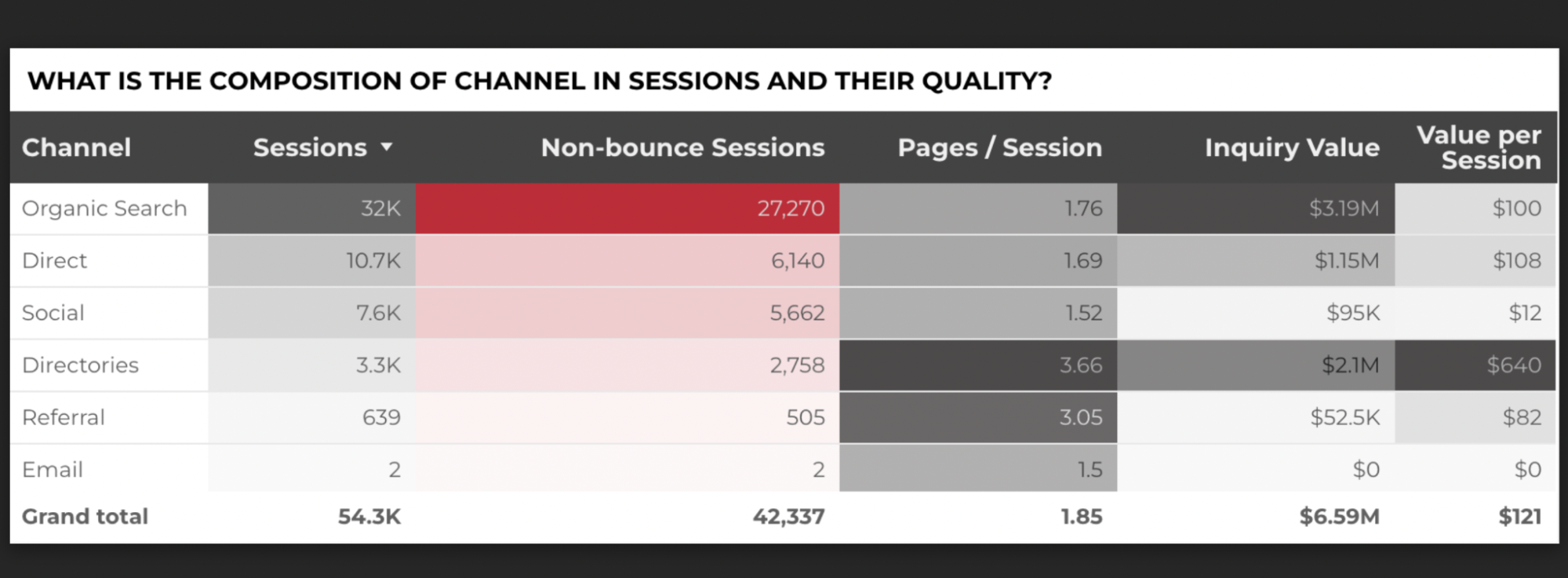
Very informative
Nice